Imagine a world where machines can learn, adapt, and interact with humans in ways that were once considered to be straight out of a fictional novel or science movie. Well, thanks to the advancements in Artificial Intelligence (AI), this is not a far-fetched dream anymore—it’s a reality! The empowering source behind this advanced technological revolution is the set of programming languages that power AI.
These languages have distinct specialities, complexities, and understanding that can help any tech-savvy developers and entrepreneurs to fully leverage the potential of AI. In fact, many global businesses are incorporating AI programming languages into their work environment. AI can be used to automate processes, build smart software systems & solutions, enhance decision-making capabilities, or even make future market predictions. So, every startup or tech giant is throwing its hands into this field.
But the main question is— Which is the best programming language for AI to help your learning journey? To answer that, we will introduce the best ones, explain why they stand out, and show where they’re being used.
What are AI Programming Languages?
AI programming languages are AI development tools for building applications that simulate human intelligence. Each language supports its own set of AI libraries and frameworks, allowing for the creation of algorithms that can learn, analyze, and make informed decisions using the available information.
Every programming language comes with its own libraries and frameworks that facilitate easier task refinement for data analysis, speech recognition, or self-driving automobiles. AI technologies can be implemented with any programming language. However, it is crucial to select a language that makes coding easier using a library designed for a specific job, like data analysis and machine learning.
For instance, Python tops the list as the best programming language for AI due to its comprehensive library collection, including PyTorch and TensorFlow, and ease of use, while R is preferred for its statistical capabilities. Other languages, such as C++, Java, and Haskell, also have significance in the development of AI systems. Smart systems are powered by AI programming languages, which blend coding to perform more AI-centric tasks effectively.
8 Best AI Programming Languages to Get Started
According to the Statista report, the Artificial Intelligence (AI) market is projected to grow phenomenally, with a volume of $1.01 trillion by the year 2031, with a CAGR of 26.60% during the forecast period (2025-2031). This new revenue growth will create new jobs, employing nearly 97 million people in the AI sector. These statistics prove that with how quickly things are evolving today, having the right skills can make all the difference between success and failure.
As an aspiring AI engineer, you must equally tailor your skills to the fast-paced nature of this field, and choosing a programming language is at the top of the list. So, we have curated the 8 best AI programming languages to build a successful career in 2025.
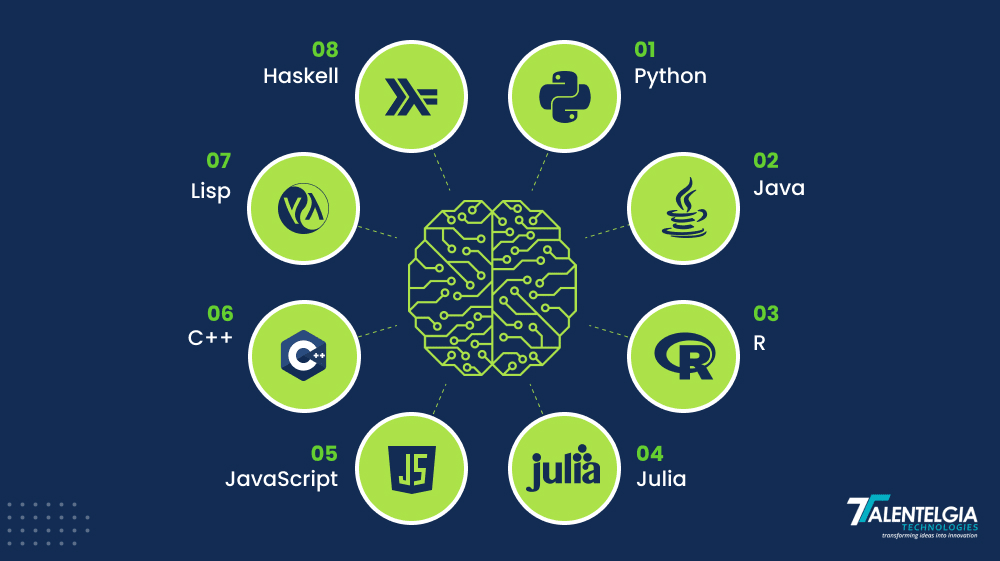
| Language | Pros | Usability | Applications | AI App Examples |
|---|---|---|---|---|
| Python | Easy syntax, vast libraries, productive | High, great for beginners & experts | Computer vision, ML & NLP | Tesla Autopilot, Alexa, Siri |
| Java | Static typing, cross-platform ready | Moderate, suitable for production | The NY Fed, The Central Bank of the US | Cortana, Google Search, Banking APIs |
| R | Built-in analysis and statistical modelling | Moderate, for data scientists | Data mining, statistical analysis | Google BigQuery ML, IBM Watson Analytics |
| Julia | High performance, math capabilities | Moderate, similar to Python | Numerical analysis, data science | Hard for advanced developers |
| JavaScript | Ubiquitous, full-stack web dev | Moderate, front-end focused | Node.js backends, browser-based ML | Angular recommendation engine, Chrome ML image search |
| C++ | Hardware control, speed, and efficiency | Hard, for advanced developers | Robotics, optimized ML apps | Self-driving cars, stock trading systems |
| Lisp | Symbolic AI, code as data constructs | Moderate, niche usage | Early AI research, pattern recognition | SPIKE, Hubble Space Telescope |
| Haskell | Type safety, functional purity | Moderate, big-data focused | ML on Spark, distributed systems | eSentire, cybersecurity solutions |
1. Python
Python is a highly versatile programming language that is very easy to use. Its beginner-friendly and straightforward syntax makes it the best pick for both novice and experienced developers. Moreover, it has become a primary language of data science and machine learning for its rich set of libraries and frameworks.
Python’s interpreted execution feature allows programmers to change code without needing to recompile, while the garbage collection feature automatically handles memory management.
Python provides robust support for scientific computation and matrices through additional libraries such as NumPy, which makes them easier to perform. This makes Python a foundational language for performing numerous AI algorithms, including statistical models and neural networks.
Python’s Benefits:
- Extensive AI libraries & frameworks: PyTorch, TensorFlow, and Scikit-learn to simplify AI machine learning tasks
- Readability and Easy-to-Use: clean and straightforward syntax makes learning easier and gives relatively faster results
- Cross-Platform Flexibility: supports multiple platforms like Windows, macOS, and Linux
- Integration Capabilities: easily integrates with other languages (C++), paired with cloud services (GCP, AWS), and big data frameworks (Apache Spark)
2. Java
Java is commonly used in AI systems to develop sophisticated business systems and runtimes. The AI can be implemented without modifying the existing systems using the Java Virtual Machine (JVM). It is easier to develop and deploy an AI application that functions on various hardware and software due to its extensive ecosystem of libraries, tools, stable runtimes, cross-platform capabilities, numerous developers, and JVM compatibility with existing codebases.
For example, DeepLearning4j includes support for a variety of neural network architectures written for the JVM. The Weka machine learning library contains many algorithms for classification, regression, and clustering algorithm libraries. Apache Spark’s MLlib is used for big-data processing, while Mallet offers natural language processing for AI-powered systems.
Java’s Benefits:
- Cross-platform capability: code written once on a specific OS can be used in other OS using JVM, especially helpful for large-scale AI projects
- Good Performance: best for AI applications that require fast and efficient real-time computational processing.
- Scalability: easier to integrate into big AI technology applications of existing enterprise environments.
- Huge Developer Pool: numerous Java coders, programmers, with massive information, coding standards, resources, and technical help.
Also, learn the difference between PHP vs Java
3. R
R is the preferred language for data visualization and statistical computing. It excels at applying AI algorithms that require complex probabilistic modelling, simulations, and in-depth statistical analysis. R has an ecosystem of packages designed for data manipulation and visualization, which are crucial for the development of AI systems. In machine learning, the caret package facilitates advanced preprocessing and validation, enhancing AI to make more accurate predictions.
The R language’s comprehensive library ecosystem, including Lattice, Shiny, and Ggplot for data visualization, dplyr for data manipulation, and lm and glm for statistical modelling, allows developers to simplify data analysis. This is especially crucial to helping AI understand anomalies and data patterns, as they significantly impact the quality of AI models.
R is widely used across various fields and industries. It is used for machine learning, statistical calculations, and data analytics in research, academia, and industry. It companies use R language for data processing and business intelligence.
R’s Benefits:
- Machine Learning: provides numerous features like randomForest, caret, e1071 to make ML app creation easier, assists in stages of data collection & processing model training, and evaluation
- Data Manipulation: cleaning and manipulating data using tidyr and dplyr, scientists can prepare datasets for efficient analysis, data quality, and consistency.
- Statistical Analysis: many packages and functions for performing statistical tests, modelling, and analyzing data.
4. Julia
Many AI developers appreciate Julia due to its quick processing speed and performance. This special programming language is designed for high-performance computing and is suitable for detailed data analysis and even training sophisticated learning models. Its syntax is less complicated than that of Python.
Julia’s compatibility with other programming languages like Python, C, and R makes it a popular option in AI development. It also has powerful frameworks and libraries that aid in constructing high-performance data models and neural networks. Julia’s code syntax is easier to follow than even Python’s, which places it in the top tier for those learning artificial languages and programming languages.
Some key libraries for big data and machine learning ( MLJ.jl, Flux.jl), data visualization (Plots.jl, Gladfly.jl), and optimization (juMP.jl) continue to mature. Its emerging ecosystem is a positive sign for the future of AI development software.
Julia’s Benefits:
- High Speed & Performance: JIT (Just-In-Time) compilation is superior to Python and processes data efficiently in any computational heavy task.
- Interoperability: compatible with Python, R, and C, allowing AI developers to use its existing libraries and frameworks
- Rapid Prototyping: best for research and development since it allows running and iterating AI models at greater speeds.
- Built-in-Parallelism: threading and distributed computing capabilities make training complex AI models over large datasets easier
5. JavaScript
JavaScript is primarily utilized in the development of dynamic interactive applications that run within a web browser. It is a client-side language, meaning it is executed on the user’s machine, on their web browser. Therefore, it can assist in accomplishing many computational tasks and improving AI performance.
Real-time AI applications like AI chatbots, virtual assistants, and recommendation systems can be integrated into web pages. JavaScript’s flexibility is used to build innovative and dynamic websites that perform functionalities such as sophisticated data and content analysis, productivity assistance, as well as real-time virtual aid and automation.
Such frontend processing may help relieve the heavy load on servers by routing computation tasks to the user’s browser, which may make applications more responsive, especially those with real-time interactions.
JavaScript’s Benefits:
- Real-Time AI Applications: creation of dynamic AI-powered applications like virtual assistants, chatbots, and recommendation engines
- Cross-Platform AI Solutions: JavaScript’s versatility across different systems and devices enables the seamless operation of AI apps across these various platforms.
- Browser-based Machine Learning: frameworks like TensorFlow.js, ConvNetJS, and Brain.js enable developers to train and deploy models on the browser without needing a backend
6. C++
C++ is well-known for providing a high execution speed as well as control over system resources, making it suitable for the development of performance-critical AI applications. It can be executed close to the system hardware, allowing more efficient processing of AI algorithms, which is critical for real-time applications and systems with limited resources.
What makes C++ unique is its ability to merge with non-native libraries such as TensorFlow and PyTorch using APIs. Still, the ability to access these libraries permits application developers to add rich features to their programs instead of having to build functionalities from scratch. The parallel computing and multithreading features available in C++ are crucial when developing powerful AI applications.
Additionally, its proprietary frameworks, like OpenCL and CUDA, enable programmers to allocate additional memory and reduce workload by using computer hardware like GPUs. Such resourceful memory allocation guarantees the smooth operation of software applications and hardware.
C++ Benefits:
- High-Performance & Efficiency: fast execution speed and low memory usage during its use. This property makes it suitable for large-scale AI calculations.
- Parallel Computing & Multithreading: Advanced concurrent processing is vital in AI for real-time data processing and sophisticated data computation
- Low-Level Hardware Control: Memory manipulation and hardware acceleration are allowed in C++, so AI models can be executed at high speeds on Intel, AMD, and ARM chips.
- Standalone Executable Programs: Cross-platform capabilities allow execution in multiple operating systems with no dependencies, enabling robust, scalable deployments.
7. Lisp
Lisp has been in the programming community for decades, which has been highly valuable in AI research and development due to its versatility and ability to handle symbolic expression processing. Code and data can be expressed in symbolic forms through primitive types such as strings or numbers, as well as complex data structures like lists and arrays.
This exceptional trait enables developers to perform intricate computations and data manipulations on enormous datasets, making it ideal for AI-powered solutions. Recursive programming techniques make accessing and working with vast amounts of data feasible, allowing the development of sophisticated AI algorithms.
With respect to typing, program code written in Lisp can be dynamically typed, allowing the interpreter to determine the type of a variable at runtime. Such an approach enhances flexibility while equally handling complex hybrid data structures that would otherwise be impossible with the static nature of AI data.
Lisp’s Benefits:
- Flexibility: ideal to be used in AI due to its dynamics permit rapid changes and prototyping.
- Symbolic Expression Processing: Perfect for representing knowledge, automated inference, and symbolic AI.
- Pioneer of AI Systems: crucial in creating AI programs like Macsyma, DART, and early NLP systems
- Homoiconicity: The code and data have the same organizational layout, supporting sophisticated AI construction and metaprogramming.
8. Haskell
As a highly functional programming language, Haskell provides some of the best advantages in developing Artificial Intelligence due to its mathematical precision and strong reliability. Its lazy evaluation strategy helps to make algorithms more efficient, as computations are only performed when absolutely necessary. In addition, Haskell’s clean and reliable code maintains dependability and precision of execution, which is critical in AI research and applications.
Haskell’s strong framework, principles, and robust data types for AI development make machine learning programs easy to build while maintaining flexibility and correctness. It is used in finance for tasks such as formal verification and in blockchain for safety-critical systems where precision and dependability are vital.
Some libraries, such as HLearn and LambdaNet, have been created specifically for machine learning and neural networks. Moreover, Haxcel and BayesHaskell offer support for linear algebra and probability. Overall, Haskell is a good choice for those looking for a reliable and powerful programming language.
Haskell’s Benefits:
- Concurrency & Parallelism: These are suitable for AI-related activities involving extensive data manipulation, including distributed computing, and permit software design that includes effective multitasking.
- Mathematical precision and accuracy: accurate and robust static typing makes it stand out in sectors that emphasize precision, such as finance and aerospace.
- High-Level Abstractions: helps in the representation of AI models, optimization tasks, and other complex computations clearly and accurately.
- Pure Functions & Immutability: data is immutable, meaning it cannot be changed once created, which eliminates unintended side effects and guarantees stability through multiple computations. Also reduces bugs and makes reasoning about the code easier, especially in complex multi-state applications.
Conclusion
AI is already here and transforming how we live, interact with people around the world, while creating new opportunities for individuals and businesses as well. In the IT sector, there's hardly any magic bullet or a “one-stop solution” for anything. So, while selecting a programming language for an AI, you would have to consider many options.
You may need to change languages based on the specific project, the working environment your team is using, as well as your own strategies and understanding of the work. If you’re struggling to find the right AI programming languages or features to develop your business application, you can contact us today!


 Healthcare App Development Services
Healthcare App Development Services
 Real Estate Web Development Services
Real Estate Web Development Services
 E-Commerce App Development Services
E-Commerce App Development Services E-Commerce Web Development Services
E-Commerce Web Development Services Blockchain E-commerce Development Company
Blockchain E-commerce Development Company
 Fintech App Development Services
Fintech App Development Services Fintech Web Development
Fintech Web Development Blockchain Fintech Development Company
Blockchain Fintech Development Company
 E-Learning App Development Services
E-Learning App Development Services
 Restaurant App Development Company
Restaurant App Development Company
 Mobile Game Development Company
Mobile Game Development Company
 Travel App Development Company
Travel App Development Company
 Automotive Web Design
Automotive Web Design
 AI Traffic Management System
AI Traffic Management System
 AI Inventory Management Software
AI Inventory Management Software
 AI Software Development
AI Software Development  AI Development Company
AI Development Company  AI App Development Services
AI App Development Services  ChatGPT integration services
ChatGPT integration services  AI Integration Services
AI Integration Services  Generative AI Development Services
Generative AI Development Services  Natural Language Processing Company
Natural Language Processing Company Machine Learning Development
Machine Learning Development  Machine learning consulting services
Machine learning consulting services  Blockchain Development
Blockchain Development  Blockchain Software Development
Blockchain Software Development  Smart Contract Development Company
Smart Contract Development Company  NFT Marketplace Development Services
NFT Marketplace Development Services  Asset Tokenization Company
Asset Tokenization Company DeFi Wallet Development Company
DeFi Wallet Development Company Mobile App Development
Mobile App Development  IOS App Development
IOS App Development  Android App Development
Android App Development  Cross-Platform App Development
Cross-Platform App Development  Augmented Reality (AR) App Development
Augmented Reality (AR) App Development  Virtual Reality (VR) App Development
Virtual Reality (VR) App Development  Web App Development
Web App Development  SaaS App Development
SaaS App Development Flutter
Flutter  React Native
React Native  Swift (IOS)
Swift (IOS)  Kotlin (Android)
Kotlin (Android)  Mean Stack Development
Mean Stack Development  AngularJS Development
AngularJS Development  MongoDB Development
MongoDB Development  Nodejs Development
Nodejs Development  Database Development
Database Development Ruby on Rails Development
Ruby on Rails Development Expressjs Development
Expressjs Development  Full Stack Development
Full Stack Development  Web Development Services
Web Development Services  Laravel Development
Laravel Development  LAMP Development
LAMP Development  Custom PHP Development
Custom PHP Development  .Net Development
.Net Development  User Experience Design Services
User Experience Design Services  User Interface Design Services
User Interface Design Services  Automated Testing
Automated Testing  Manual Testing
Manual Testing  Digital Marketing Services
Digital Marketing Services 
 Ride-Sharing And Taxi Services
Ride-Sharing And Taxi Services Food Delivery Services
Food Delivery Services Grocery Delivery Services
Grocery Delivery Services Transportation And Logistics
Transportation And Logistics Car Wash App
Car Wash App Home Services App
Home Services App ERP Development Services
ERP Development Services CMS Development Services
CMS Development Services LMS Development
LMS Development CRM Development
CRM Development DevOps Development Services
DevOps Development Services AI Business Solutions
AI Business Solutions AI Cloud Solutions
AI Cloud Solutions AI Chatbot Development
AI Chatbot Development API Development
API Development Blockchain Product Development
Blockchain Product Development Cryptocurrency Wallet Development
Cryptocurrency Wallet Development About Talentelgia
About Talentelgia  Our Team
Our Team  Our Culture
Our Culture 
 Healthcare App Development Services
Healthcare App Development Services Real Estate Web Development Services
Real Estate Web Development Services E-Commerce App Development Services
E-Commerce App Development Services E-Commerce Web Development Services
E-Commerce Web Development Services Blockchain E-commerce
Development Company
Blockchain E-commerce
Development Company Fintech App Development Services
Fintech App Development Services Finance Web Development
Finance Web Development Blockchain Fintech
Development Company
Blockchain Fintech
Development Company E-Learning App Development Services
E-Learning App Development Services Restaurant App Development Company
Restaurant App Development Company Mobile Game Development Company
Mobile Game Development Company Travel App Development Company
Travel App Development Company Automotive Web Design
Automotive Web Design AI Traffic Management System
AI Traffic Management System AI Inventory Management Software
AI Inventory Management Software AI Software Development
AI Software Development AI Development Company
AI Development Company ChatGPT integration services
ChatGPT integration services AI Integration Services
AI Integration Services Machine Learning Development
Machine Learning Development Machine learning consulting services
Machine learning consulting services Blockchain Development
Blockchain Development Blockchain Software Development
Blockchain Software Development Smart contract development company
Smart contract development company NFT marketplace development services
NFT marketplace development services IOS App Development
IOS App Development Android App Development
Android App Development Cross-Platform App Development
Cross-Platform App Development Augmented Reality (AR) App
Development
Augmented Reality (AR) App
Development Virtual Reality (VR) App Development
Virtual Reality (VR) App Development Web App Development
Web App Development Flutter
Flutter React
Native
React
Native Swift
(IOS)
Swift
(IOS) Kotlin (Android)
Kotlin (Android) MEAN Stack Development
MEAN Stack Development AngularJS Development
AngularJS Development MongoDB Development
MongoDB Development Nodejs Development
Nodejs Development Database development services
Database development services Ruby on Rails Development services
Ruby on Rails Development services Expressjs Development
Expressjs Development Full Stack Development
Full Stack Development Web Development Services
Web Development Services Laravel Development
Laravel Development LAMP
Development
LAMP
Development Custom PHP Development
Custom PHP Development User Experience Design Services
User Experience Design Services User Interface Design Services
User Interface Design Services Automated Testing
Automated Testing Manual
Testing
Manual
Testing About Talentelgia
About Talentelgia Our Team
Our Team Our Culture
Our Culture
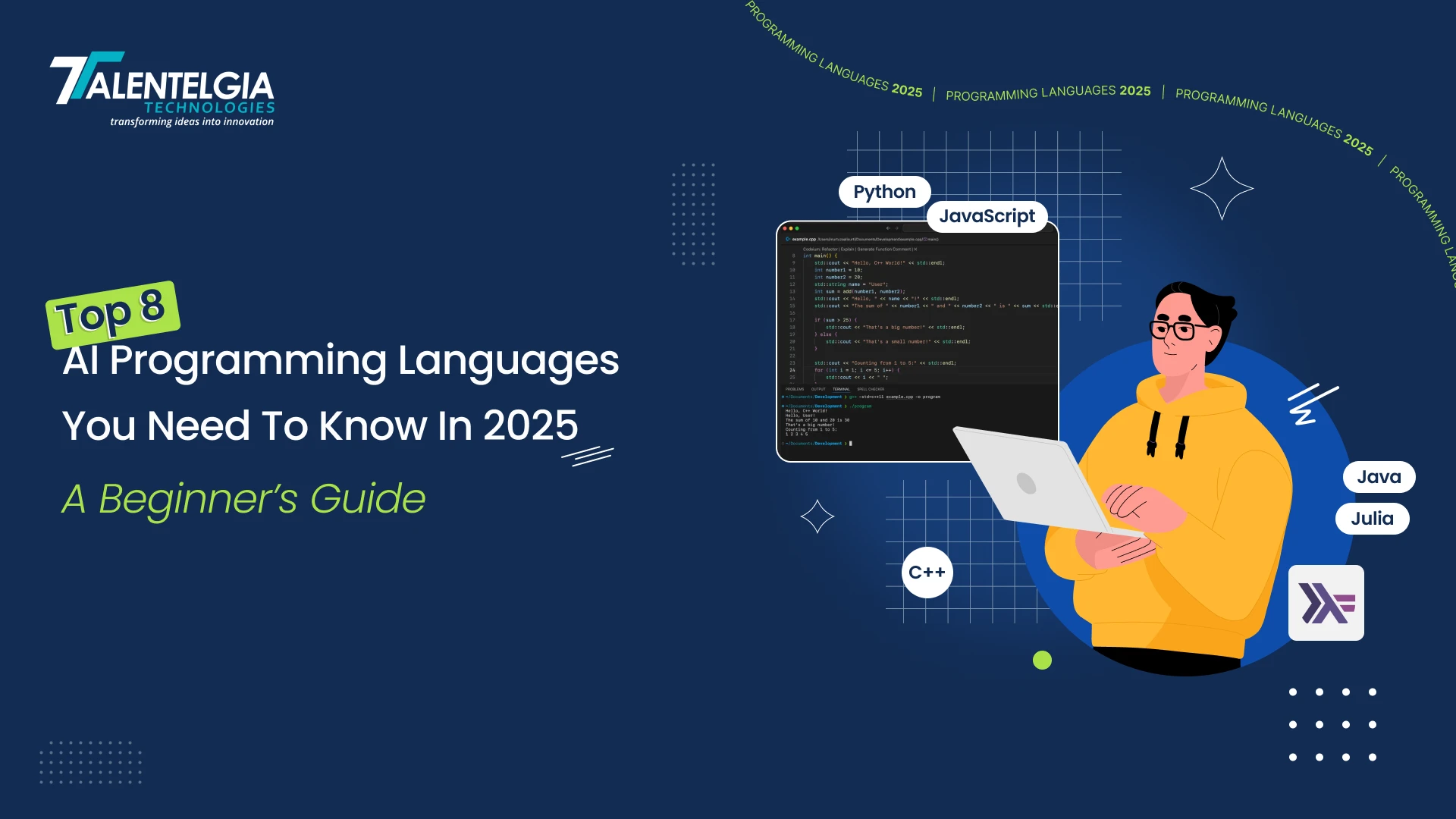

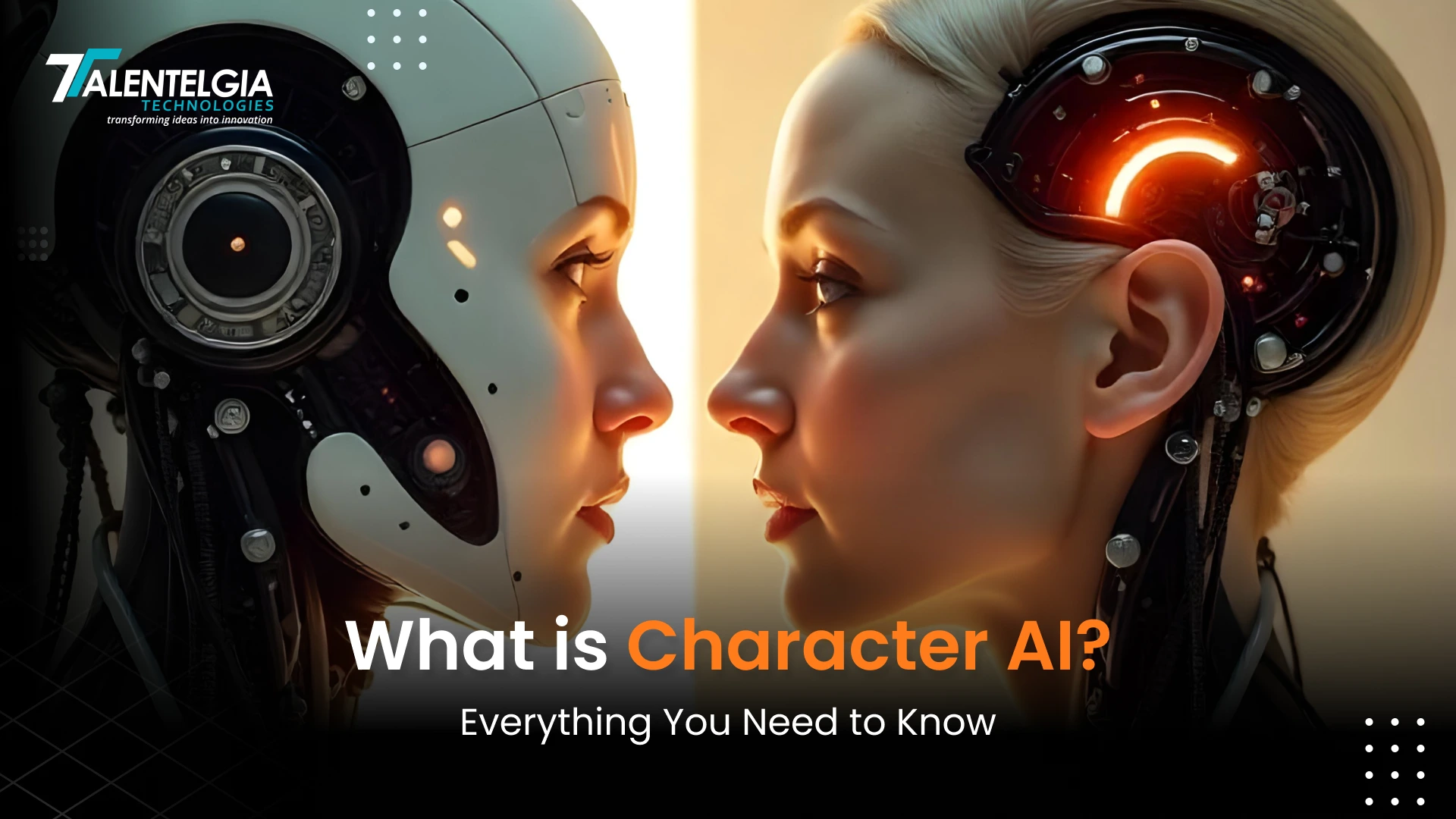


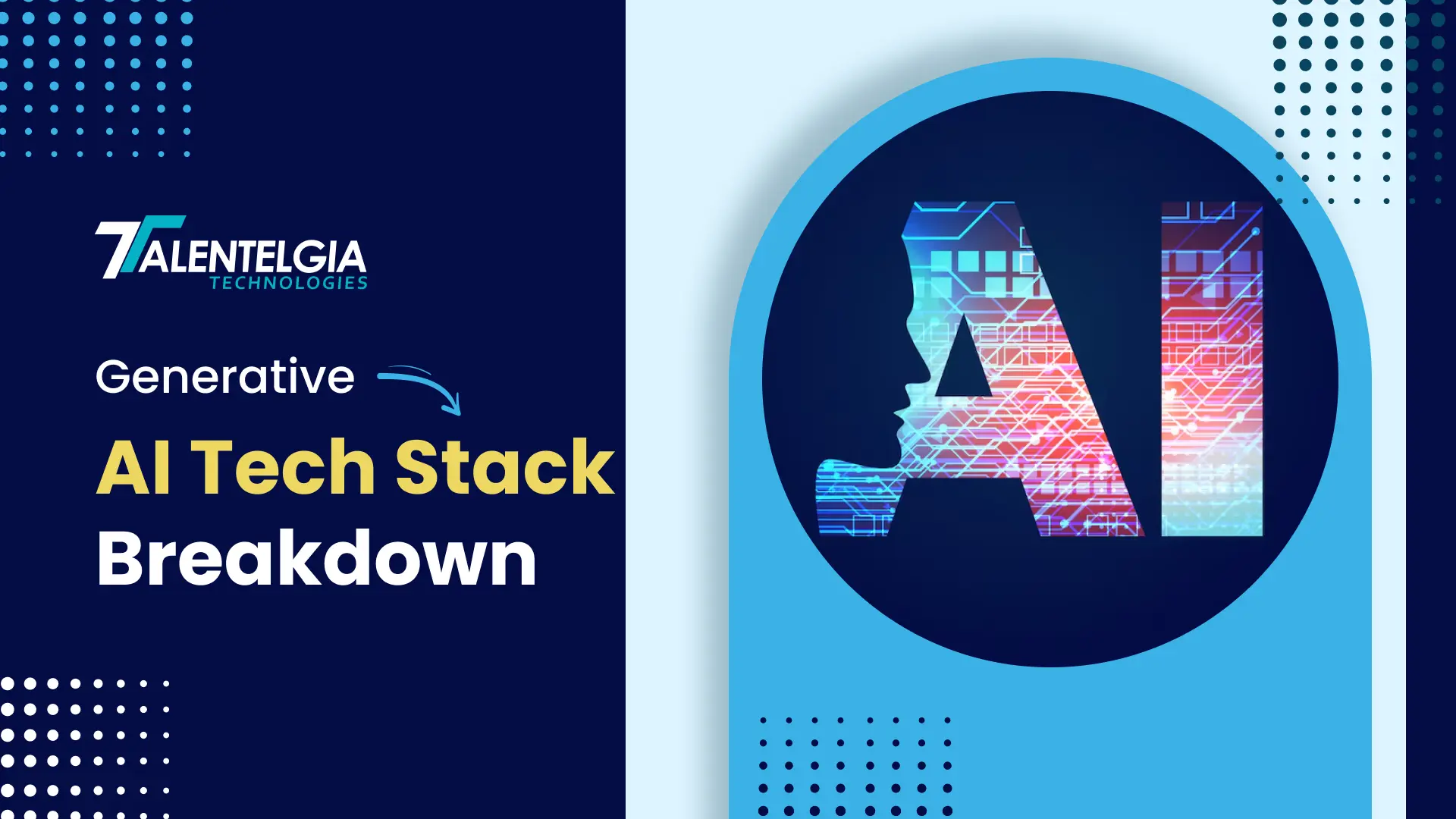










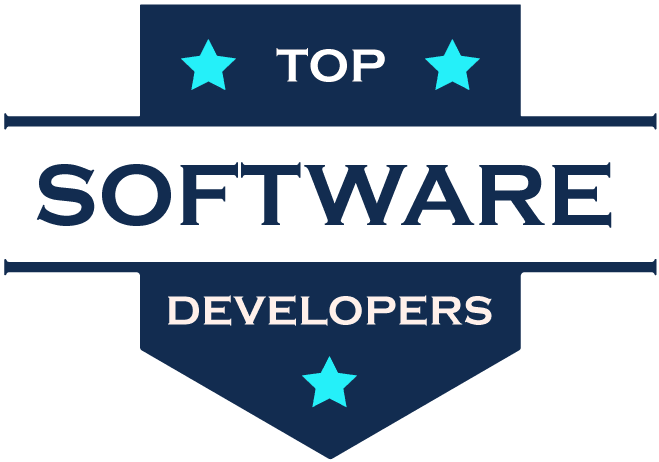
 Write us on:
Write us on:  Business queries:
Business queries:  HR:
HR: 




